Minicata
I have sailed all my life. When I was kid (3 years
old) I sailed with my grandfather in an old double ender with
heavy sails. In time, I sailed in all kinds of other small sailboats,
like Optimists, Cadets, Snipes, 470's, Tornados, Solings, and
Lignthings.
Now I have an 8 m Van de Stadt Bries which I often
sail with my kids. They had only sailed in this boat and wondered
what would happen if you don't have a heavy keel. My big kid
took sailing lessons at the club but she didn't like the instructors
and wanted to learn with me so I started looking for something
we could both sail.
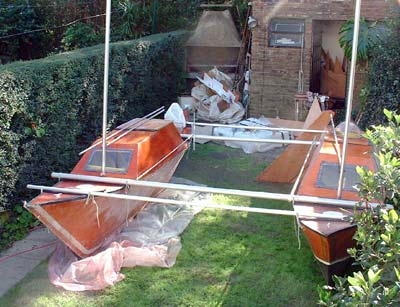
First I thought of a Snipe. I raced one for five
years, but I was afraid that if she took the rudder, she could
have very big problems... then a Lightning, I had one for two
years but it was like a cow in the water.
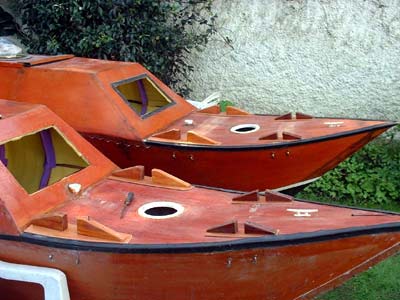
At last I designed something that is 14 feet long
with a little bed and cabin that you could steer from in any
kind of weather. It does not have a deep keel, only 30 cm.,
and the rudder continues the line of the keel.
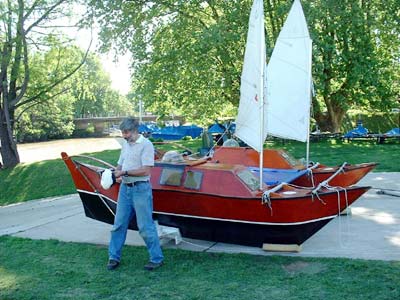
The keels, as you can see in the pictures, are
the double ended hulls. It can sail like a proa or like a "biplane
rig".
In all conditions of wind and water, the rudders
respond exactly the way you want, because they are three meters
apart.
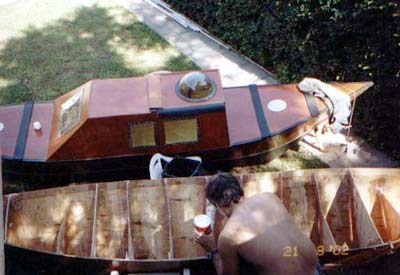
I spent 110 hs. of design, building a scale model
and trying it in scale wind and waves.
I built it using the switch and glue method.
The two hulls have 13 bulkheads and are very strong.
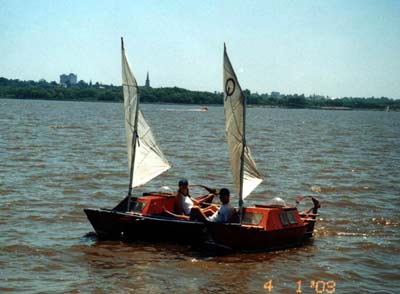
Fernando Daroqui, of Puerto Madryn, Argentina
modified the plans a little and built one with some kids in
his club. See their website
for more information.
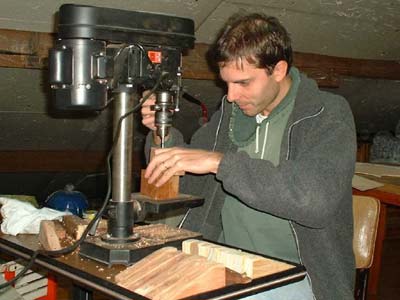
In the case of Tres Marias, I have +/- 500 pictures
taken of the construction, but I dont want to show them all
as some are very personal.
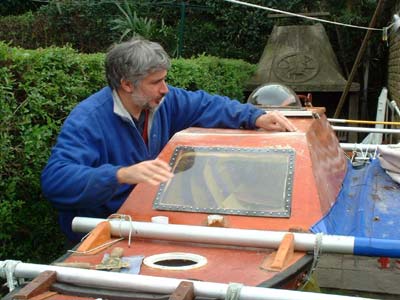
The total weight is 140 kg.
It is made of plywood and epoxy.
I didn't use James Wharram's designs but rather
looked at a lot of different Polynesian cats then I designed
my own to sail in 35 cm of water.
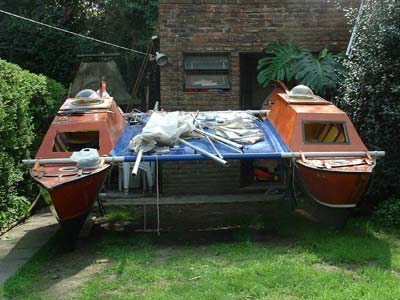
It has two berths.
It salis very fast on a run and very close to
the wind.
I have sailed her in all kinds of wind, and with
numerous passengers aboard. The worst was with the wind on the
nose and blowing 35 knots. The cat, NEVER, flew a hull with
the biplane rig, and when I wantd to slow her down, I simply
took one sail down and she went like a normal monohull.
Martin
Stern

